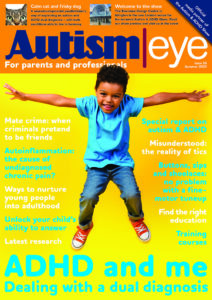Parents of children with autism who would like to run genetic tests on them should look to two new testing approaches, according to a study.
 Chromosomal microarray analysis (CMA) and whole-exome sequencing (WES) were found to be superior to current approaches in identifying genetic mutations linked to autism.
Chromosomal microarray analysis (CMA) and whole-exome sequencing (WES) were found to be superior to current approaches in identifying genetic mutations linked to autism.
The study also found that children with certain physical anomalies were more likely to have detectable genetic mutations when running the two tests.
According to the Autism Speaks charity, which part-funded the research, the findings may help to identify children who could benefit most from genetic tests.
The research was led by Dr Stephen Scherer of the Hospital for Sick Children, Toronto. It involved 258 unrelated children with autism. All the children underwent CMA and a random subset of 95 also underwent WES.
Out of the 258 children, 24 (9.3 percent) received a molecular diagnosis from CMA and 8 out of 95 (8.4 percent) from WES.
Among the children who underwent both CMA and WES genetic tests, the estimated proportion with an identifiable genetic cause was 15.8 percent.
Dr Mathew Pletcher, vice president and head of genomic discovery at Autism Speaks, said: “The researchers demonstrate that modern diagnostic tools can greatly increase the ability to identify genetic causes for a subset of people with autism spectrum disorder.”
He added: “The results from the type of tests used in this study allow for a more informed and individualized treatment plan that can only be developed by knowing the specific genetic causes and associated risks factors.”
Bridget Fernandez from Memorial University, who was involved in the study, said: “In some cases a positive test result alters a child’s medical management, for example we know that we should be watching for the development of obesity or diabetes because of the type of genetic change.”
The study was published in the Journal of the American Medical Association. It concluded that the findings “may inform appropriate selection of molecular diagnostic testing for children affected by ASD”.
Published: 11 September 2015















